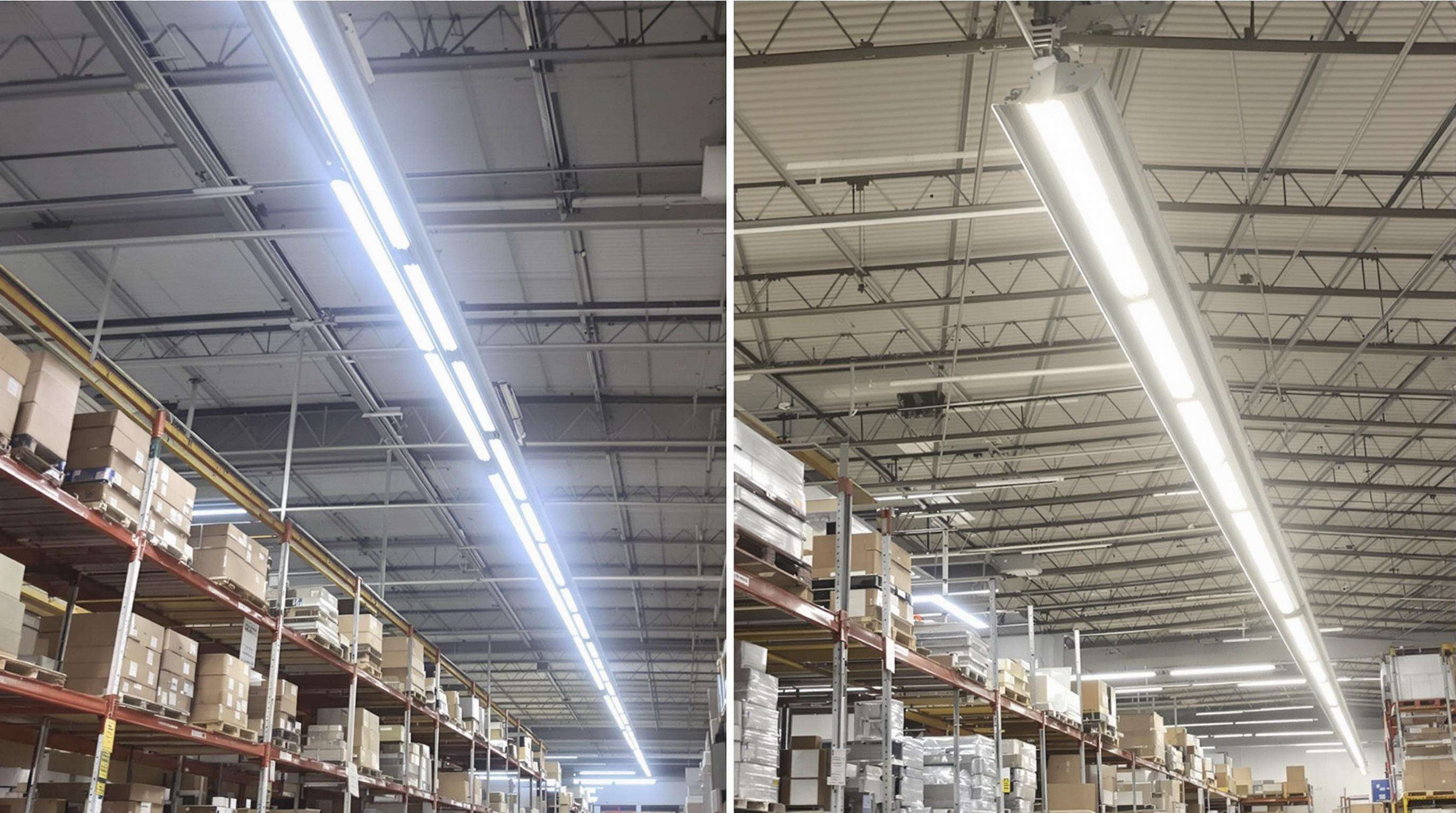
LED Linear Fixtures use between 40 and 60 per cent less energy than their fluorescent tube counterparts and in some cases up to 80 per cent less power than the metal halide alternatives. *Original 4 lamp, T12 2×4 Troffer drawing 128 watts can be replaced by a 45 watt LED Fixture without loss of light. 8% of the energy used by LEDs are emitted as light, whereas incandescent are 10-20% efficient.
Three key factors drive efficiency:
A 2024 case study showed warehouses achieving 68% energy savings by combining linear LEDs with networked controls—far exceeding basic fixture replacements.
Utility programs and federal tax credits often offset 30-50% of LED upgrade costs. The 2022 Inflation Reduction Act expanded deductions to $1.88 per square foot for retrofits meeting 25% energy reduction thresholds. Facility managers should check local programs, as 28 states offer warehouse-specific incentives.
LED linear systems emit minimal infrared heat compared to traditional lighting’s 70-90% heat output. This reduces HVAC cooling loads by 15-20% in climate-controlled warehouses. Advanced thermal management via aluminum channels preserves efficiency and lifespan in demanding environments.
LED linear fixtures maintain ≥70% lumen output beyond 100,000 hours—11 years of 24/7 warehouse use. Metal halide systems require bulb replacements every 15,000–20,000 hours, making LED relamping frequency 83% lower.
High-ceiling warehouses save $18,000–$25,000 annually with LED systems, as they reduce lift rentals for bulb changes by 60–70%. Fewer disruptions benefit facilities running three shifts.
LEDs demonstrate 98% operational reliability in sub-zero environments versus 72% for fluorescents. Instant cold-start capability (-40°F) and moisture resistance prevent flickering, protecting perishable inventory.
Directional 45°-angled LEDs improve inventory scanning by 23% in narrow aisles. Dual-lens systems achieve 75 fc uniformity with consistent color (CRI 80) even in 95°F mezzanines.
COB (Chip-on-Board) LEDs achieve 92% energy-to-light conversion—35% higher than SMD fixtures. This addresses thermal and spectral challenges in industrial settings.
COB designs reduce heat concentration by 60%, maintaining 95% lumen output at 113°F. Encapsulated chips cut failure points by 87%, lowering maintenance frequency.
COB-enabled fixtures (97 CRI ±50K adjustability) reduce inspection errors by 31%. Ambient sensors auto-dimm while meeting IES RP-7 standards.
Per 10,000 sq. ft., LEDs cut CO2 by 1.2 tons/year. A 500-fixture retrofit equals removing 20 gasoline vehicles annually. Payback typically occurs within 24 months via $0.18/sq. ft. energy savings.
While 95% of LED materials are recyclable, only 18-22% enter formal streams due to infrastructure gaps. Modular designs and reverse supply chains could reclaim 87% of materials.
75% of retrofits break even within 18 months (DOE 2023). One cold storage facility saved $4.20/sq. ft. annually, recovering costs in 16 months with rebates.
140° beam spreads reduce shadow zones by 81%, leading to:
| Cost Factor | LED Linear (5 yrs) | Fluorescent/HID (5 yrs) |
|---|---|---|
| Initial Installation | $18.40/sq ft | $9.80/sq ft |
| Energy Consumption | $2.10/sq ft/yr | $7.30/sq ft/yr |
| Maintenance | $0.40/sq ft/yr | $2.90/sq ft/yr |
| Total | $29.40/sq ft | $54.20/sq ft |
LED systems offer 83% lower lifetime costs, with 65% of savings after year 3 (Lighting Research Center 2023).
LED Linear Fixtures use between 40 and 60 per cent less energy than fluorescent tubes and up to 80 per cent less than metal halide alternatives.
LED linear fixtures can maintain ≥70% lumen output beyond 100,000 hours, significantly longer than metal halide systems which need replacements every 15,000–20,000 hours.
Yes, utility programs and federal tax credits often offset 30-50% of LED upgrade costs, and some states offer even more incentives.
LEDs show 98% operational reliability in sub-zero environments, offering instant cold-start capabilities and moisture resistance to protect inventory.
Yes, about 95% of LED materials are recyclable, although practical recycling rates currently lag due to infrastructure gaps.